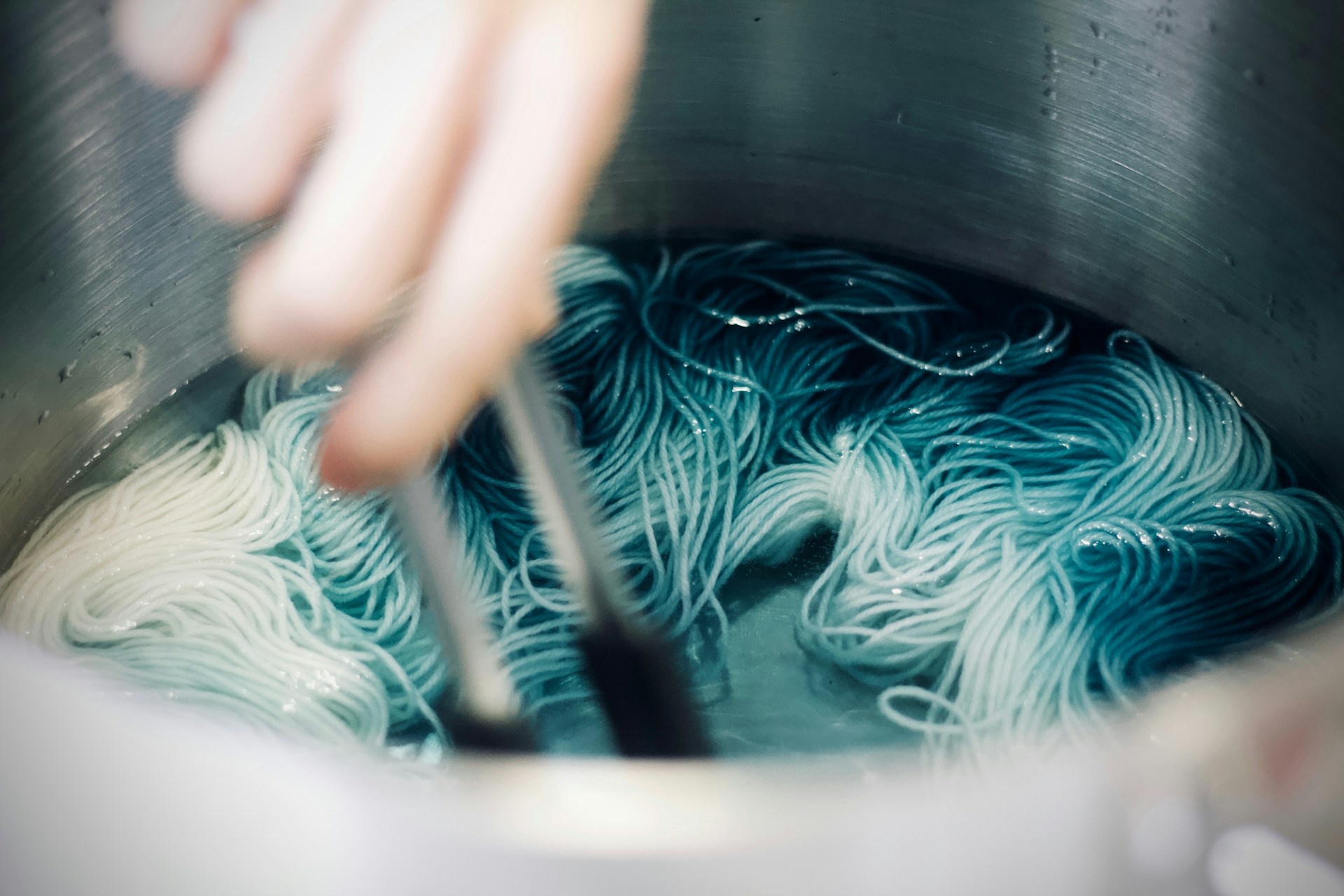
How to Make Natural Dyes in Every Color: A Step-by-Step Guide
We are reader-supported. When you buy through links on our site, we may earn affiliate commission.
Artificial chemical dyes waste a massive amount of water and can harm the environment. Fortunately, an eco-friendly alternative exists. Here’s how to make natural dyes using plants, produce, and spices.
Why Is Making Natural Dyes a Good Idea?
Most people learn how to make natural dyes because it’s much better for the planet. Unfortunately, the traditional dyeing process for fabrics and foods is very resource-intensive and uses a tremendous amount of water.
Additionally, while not all manufactured dyes harm the environment, many do. In fact, 20% of the world’s wastewater comes from chemical fabric dyes. These harsh chemicals can pollute waterways and lower soil fertility.
In contrast, all-natural materials cause no environmental damage and still look spectacular. Even though they’re not usually as saturated, the ecological benefits make the loss of vibrancy worth it. If you want to use less natural resources and help the planet, you should find out how to make natural dyes.
Which Ingredients Will Make Which Colors?
You can use practically any plant, produce or spice to make a natural dye. Many of those ingredients are available year-round. Here’s how to make natural dyes with every color under the rainbow.
Red
Produce like raspberries, cherries, cranberries, and pokeberries will make rich dyes. You can also use hibiscus, rose, amaranth, and hollyhock plants. Most deeply red flower petals will produce saturated pigments. Beetroots will make a pink dye that is incredibly vibrant.
Orange
The flower calendula makes for a fantastic natural orange dye. To get that classic, bright color, use carrots or orange peels. Surprisingly, pomegranates can also produce deep orange hues.
Yellow
Tumeric is incredibly vibrant and easily stains. Ginger is another good spice, but it isn’t as bright. Flowers like goldenrod, yarrow, black-eyed Susan, and dandelions produce varying shades of yellow. You can also use lemon peels.
Green
You can use almost any plant’s stems and leaves to make a vibrant green color. Leafy greens like spinach also work well. If you want a very bright shade, you may have to add some blue.
Indigo
Blue flowers like bachelor buttons and Russian sage will create unique, rich hues. Of course, you can also use blueberries for a very dark dye. Red cabbage makes a classic, bright purple color. If you want something more saturated and subtle, use blackberries.
Brown
Red onion skin and acorns can make light brown or tan dyes. If you want something darker, use black walnuts or used coffee beans.
What You Need to Make Natural Dyes
You need a blender, food processor, knife, and cutting board to make your ingredients usable. If you have the time, you can even use a mortar and pestle. You can use anything if you get the raw material to have a paste-like consistency.
You need a pot, water, and a stovetop to draw the color out of your ingredients. If you don’t have those, you can get a glass jar and use cool water instead — but you’ll need a sunny windowsill and a warm spot.
A cheesecloth or sieve is essential for separating the solids from the liquids after achieving the desired color. While you can technically use a coffee filter, it’s only convenient for small batches. The same concept applies to strainers — fine pieces will fall through the holes.
You’ll need bowls to capture the dye as you strain it. Also, you must get airtight jars to store your finished product and keep it clean. Once you have all these tools, you can figure out how to make natural dyes.
How to Make Natural Dyes by Hand
You can produce any color under the rainbow using the ingredients we listed previously. Here’s how to make natural dyes for fabric or food dyeing.
- Grind Your Ingredients
After you source your ingredients, get your cutting, blending, or crushing tool to grind them up. You don’t need to mix everything evenly — just make sure you don’t leave anything intact. For example, you should ensure you squish every raspberry. This way, you can guarantee you get the most color out of your components.
If you plan on making food dye, triple-check that your ingredient is edible. While flowers like dandelions are usually safe to eat, many alternatives you find in nature won’t be.
- Simmer or Sunlight
The first method involves stovetop simmering. You’ll need water and crushed ingredients in a 1:1 cup ratio. If you’re only using spices, use 1 cup of water to 1 tablespoon of spice instead. Simmer everything until you achieve the desired color — this could take anywhere from a few minutes to over an hour.
Your second option is called solar dyeing, a method where you let the sun do the work. Put the item you want to dye and the ingredient you’re dyeing it with into a jar of cool water and close the lid. Then, put it in a warm, sunny windowsill. This technique is much more hands-off but will take days or even weeks.
- Strain and Catch the Liquid
Once the water reaches the color you want, strain it through the sieve or cheesecloth and — this is crucial — make sure you have a bowl underneath. If you don’t use a container to catch your newly-made natural dye, you’ll be left with a bag full of wet mush and a partially-stained sink.
Speaking of your leftover ingredients, you should know you can use them again. While the resulting dye won’t be as vibrant, you can save them for later use. If you don’t want wet organic mush lying around, you can compost them.
- Adust the Color and Store
The dyeing process is all about chemical reactions, meaning you can use an acid or alkaline — like vinegar or baking soda — to permanently change the colors of your finished product. For example, adding lemon juice to a purple cabbage dye changes it into a dark pink. Changing the pH level will instantly give you some unique hues.
Now You Know How to Make Natural Dyes
Once you know how to make natural dyes, you can experiment with colors, ingredients, and pH balance to grow your knowledge base. While many online resources about homemade dyeing exist, there’s no better way to learn than to start practicing yourself.
Share on
Like what you read? Join other Environment.co readers!
Get the latest updates on our planet by subscribing to the Environment.co newsletter!
About the author
Rachel Lark
Rachel serves as the Assistant Editor of Environment.co. A true foodie and activist at heart, she loves covering topics ranging from veganism to off grid living.





